In this Topic Show
This help topic provides a basic example to help you get started creating Emboss Regular features. By providing the fundamental information about this feature type, this topic can be useful for beginners or advanced users alike.
For this example, you start from a new file. The entire process of creating an Emboss feature is explained.
The Emboss Regular feature requires that the geometry used for the feature is a closed loop. The geometry can be any combination of lines, arcs, and splines, but the entities must share the same start and end point (closed loop).
1 To open a new file, in the File menu, click New.
2 In the Arcs menu, click Coordinates.
3 In
the ![]() Property Manager
tab, type the following values.
Property Manager
tab, type the following values.
Arc Coordinate
Center X |
3.00 |
Center Y |
3.00 |
Center Z |
0.00 |
Radius |
1.00 |
Start Angle |
0.00 |
End Angle |
360.00 |
4 After typing the values, the CAD preview is updated in the Workspace (the graphics area).
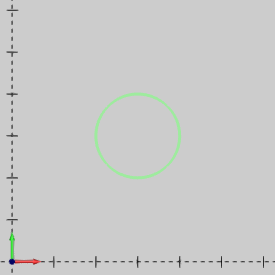
5 To create the arc, as shown in the preview, click OK.
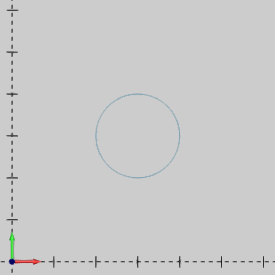
6 The geometry creation for the feature is complete. To close the Arc function, click Cancel.
1 In
the Manager Pane, click the ![]() BobART Manager
tab.
BobART Manager
tab.
2 Right-click
(click with the right mouse button) ![]() Emboss
Model, and click Create/Modify
Stock.
Emboss
Model, and click Create/Modify
Stock.
3 In the Stock Parameters dialog box, in the Origin group, double-click (click twice quickly) in the X box so that the entire value is selected. Type 1.000 and press Tab.
4 In the Y box, type 1.000.
The Origin settings define the lower-left corner
(origin) of the stock in the graphics area. The Origin values set the
distance from the ![]() WCS or world coordinate system.
This is also known as the CAD coordinate system.
WCS or world coordinate system.
This is also known as the CAD coordinate system.
5 For this example, in the Model Size group, the default values of X4 Y4 are used.
These values represent the length of the stock along each of the X- and Y-axes.
6 To set the color of the stock, click Color. In the Color dialog box, click a color and then click OK. For this example, click the fifth color in the first row (Row 1, Column 5).
7 The stock parameters are now defined. To close the dialog box and create the stock, click OK.

Notice the location of the stock origin (lower-left corner). Also note that the geometry created earlier is contained within the bounds of the stock.
The stock for embossed models is created with zero thickness.
1 In
the ![]() BobART Manager,
right-click Emboss Model, and
click Emboss Regular.
BobART Manager,
right-click Emboss Model, and
click Emboss Regular.
2 In the Emboss dialog box, in the Emboss Attributes group, click in the Name box.
3 At the beginning of the description, type My so that the description displays My Regular Emboss 1.
4 To define the color of the feature, click Color. In the Color dialog box, click a color and click OK.
5 In the Emboss group, confirm that Convex Arc is selected. Also confirm that the Application Type is set to Add.
6 In the Radius box, type 0.500. Notice that the cross section preview is updated in the dialog box.

All of the other settings remain at the default values.
7 To close the dialog box and add the feature to the BobART tree, click OK.
In the BobART tree, notice that the feature, ![]() My Regular Emboss 1 - Add, is added under
My Regular Emboss 1 - Add, is added under ![]() Emboss Model. The red x
through the Emboss icon lets you know that the model needs to be Regenerated
to update the current settings. The model is Regenerated after selecting
geometry in the next part.
Emboss Model. The red x
through the Emboss icon lets you know that the model needs to be Regenerated
to update the current settings. The model is Regenerated after selecting
geometry in the next part.
1 In
the BobART tree, under ![]() My Regular Emboss 1 - Add, right-click
My Regular Emboss 1 - Add, right-click
![]() Geometry,
and click Re/Select.
Geometry,
and click Re/Select.
2 In the graphics area, point to the arc that you created earlier. When the arc changes to the highlight color, click the arc. (Because it is a single entity, the entire arc is selected.)
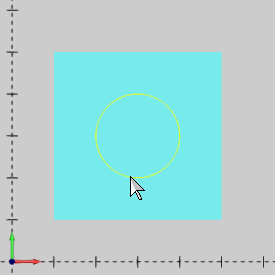
The arc then changes to the selection color to show that it is selected.
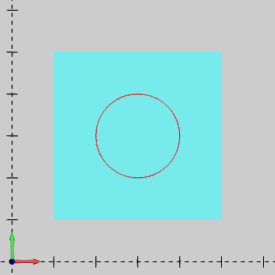
3 To
confirm the selection, right-click anywhere in the Workspace,
and click ![]() OK.
OK.
The geometry selection for the feature is complete.
TIP: When selecting geometry for Emboss features, you often need to hide the embossed model.
To hide the Embossed model/stock, do one of the following:
Right-click Emboss Model, and click Blank/Unblank.
You can also use the keyboard shortcut E. To use this method, click anywhere in the Workspace (so that it has key focus), and press E on the keyboard.
When working with Emboss features, every time that you add a new feature or modify an existing feature, the model must be regenerated.
Notice the red x through the icon. This symbol
means that changes have been made that are not yet included in the model.
After regenerating, the symbol changes to ![]() Emboss Model.
Emboss Model.
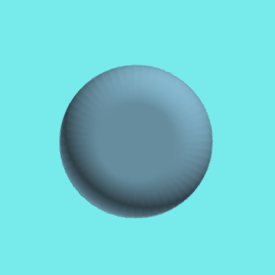

Notice that the feature geometry defines the boundary of the emboss, and the cross section defines the shape of the emboss vertically in Z. The Application Type, Add, means that the feature is added (or raised) in the positive Z-axis. The Z-height of the feature is 0.500 inches because of the 0.500 radius (Convex Arc) cross section used.
After creating an Emboss Regular feature, you can edit the feature to make changes to the model. To edit the feature, you use the Emboss Feature in the BobART Tree.
1 In
the BobART tree, right-click ![]() My Regular Emboss 1 - Add, and
click Edit.
My Regular Emboss 1 - Add, and
click Edit.
2 In the Emboss dialog box, click the Cross Section arrow and click Concave Arc.
3 To close the dialog box, click OK.
4 To update the model and show the result of the new setting, right-click Emboss Model, and click Regenerate.
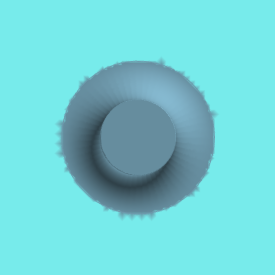

Again, you can see that the emboss starts at the boundary defined by the feature geometry, and the cross section defines the shape of the emboss in Z.
5 Edit the feature (as in step 1).
6 In the Emboss group, click the Application Type arrow and click Subtract. This means that the feature is lowered in the negative Z-axis direction.
7 Click OK to close the dialog box, and Regenerate the model (as in step 4).
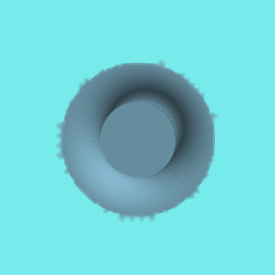

1 In the Other menu, click Rectangle.
2 In
the ![]() Property Manager
tab, double-click in the Length (X)
box and type 3.00.
Property Manager
tab, double-click in the Length (X)
box and type 3.00.
3 Press Tab, and type 3.00 in the Width (Y) box.
(Do not change the default Corner Type, Sharp Corner.)
4 In the Origin group, with Enter selected, type 3.00 in the X box, and type 3.00 in the Y box.
5 After typing the values, the CAD preview (displayed in green) is updated in the graphics area.
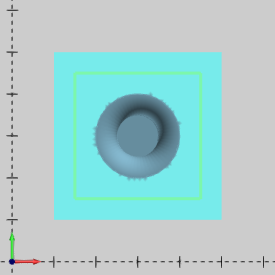
6 To create the rectangle, as shown in the preview, click OK.

7 The geometry creation is complete. To close the Rectangle function, click Cancel.
The following section shows how the Emboss Regular feature handles more than one geometry selection.
TIP: In
the BobART tree, click ![]() My
Regular Emboss 1 - Subtract. Notice that the feature geometry is
highlighted in the graphics area. You can use this preview to locate each
feature when the BobART tree contains multiple features.
My
Regular Emboss 1 - Subtract. Notice that the feature geometry is
highlighted in the graphics area. You can use this preview to locate each
feature when the BobART tree contains multiple features.
1 To hide the model, click anywhere in the Workspace, and press E.
2 In
the ![]() BobART
tab, right-click
BobART
tab, right-click ![]() Geometry,
and click Re/Select.
Geometry,
and click Re/Select.
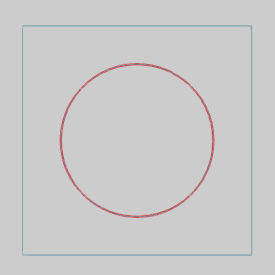
Notice that the previous feature geometry is still highlighted. This shows that it is still selected.
3 Press and hold Shift, and select any line of the rectangle. All entities (two chains) are now selected.

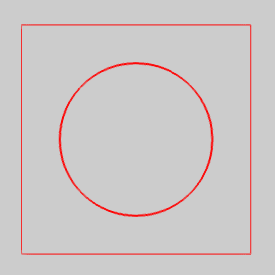
When selecting multiple connected entities, you can press and hold Shift to select the entire chain. This is called the chain-selection method.
4 To
confirm the selections, press the Spacebar.
(This is the same as clicking ![]() OK in the Workspace shortcut menu.)
OK in the Workspace shortcut menu.)

5 Edit the feature. Set the Cross Section to Convex Arc, and set the Application Type to Add.
6 To update the model, right-click Emboss Model, and click Regenerate.
To show the model, click anywhere in the Workspace, and press E.


Notice that the common areas of the two loops are not included in the emboss.
1 Hide the embossed model.
2 Right-click
![]() Geometry,
and click Re/Select. (The previous
geometry selection remains highlighted.)
Geometry,
and click Re/Select. (The previous
geometry selection remains highlighted.)

3 Click the arc to remove it from the selection.
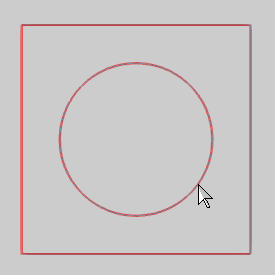

4 To
confirm the selection, on the Miscellaneous
toolbar, click ![]() OK.
OK.
5 To add the change to the model, right-click Emboss Model and click Regenerate.
6 Show the embossed model.
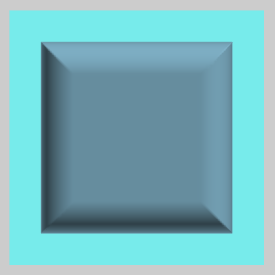
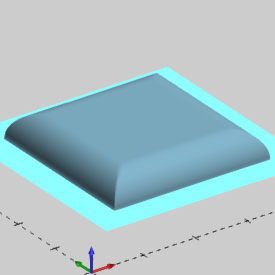
Notice that the result is the same as that created in Part 5. The only difference being the feature geometry is now a rectangle. The Z-height of the model is 0.500 inches because of the defined cross section.
When using the cross-section types, Convex Arc or Concave Arc, you can modify the start and end of the cross section to change the result. This is shown in the next part of this tutorial.
When using the cross-section types, Convex Arc or Concave Arc, you can modify the cross section using the Start Angle and End Angle parameters.
1 Right-click My Regular Emboss 1 - Add, and click Edit.
2 In the Emboss dialog box, in the Start Angle box, type 45.00.
This causes the cross section to start at the midpoint of the arc (45 is half of 90). The range of possible values for the Start Angle and End Angle are from 0.00 to 90.00 degrees.
3 To close the dialog box, click OK.
4 To view the change in the model, Regenerate.

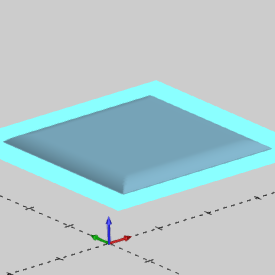
The Z-height of the model is now much lower than the previous result. To find the height of the model, right-click anywhere in the Workspace, and click Entity Summary. In the Bounds group, notice the Z Total box displays 0.1464. This is exactly the height of an arc with a 0.500 inch radius drawn from 45 degrees to 90 degrees.
When using any of the standard cross-section types in the Emboss dialog box, you can manually edit the cross section using the cross section preview that displays in the dialog box.
1 Edit the feature. In the Emboss group, click the Cross Section arrow and click Spline.
2 In the preview, click the red point on the right side. Drag (click and hold the mouse button) the point up to the 0.500 inch grid line as shown next.
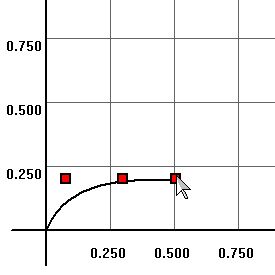
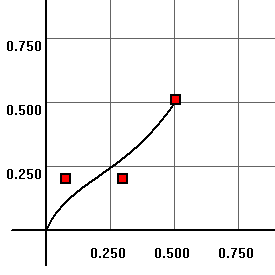
3 Click and drag the first point (on the left) up to the 0.500 inch grid line.
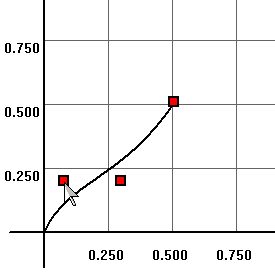
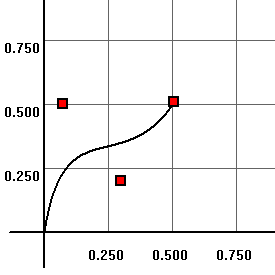
4 Click and drag the second point down to about 0.125.
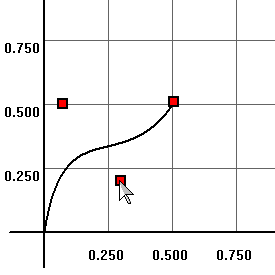
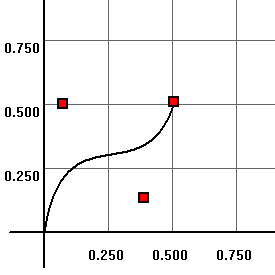
5 Notice that the parameters of the three points are updated in the Cross Section group.
6 Click OK.
7 Regenerate the model to view the changes.
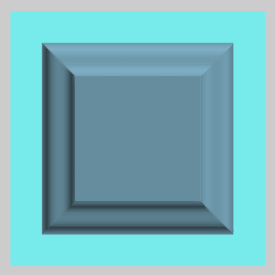
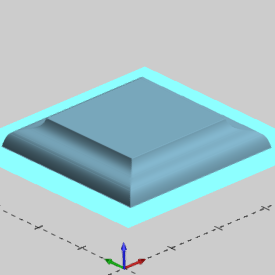
The Fast Edit section of the Emboss dialog box is used to scale the cross section or to add a base height which creates a wall at the bottom of the feature.
1 Edit the feature. In the Fast Edit group, set the Base Height to 1.00.
2 Click OK, and Regenerate the model.

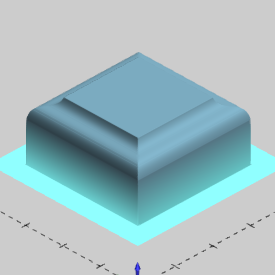
3 Edit the feature. In the Fast Edit group, set the X-Y Scale to 0.500, and set the Z Scale to 0.500. These settings cause the defined cross section to be 50 percent (0.500) of the size in both the X- and Y-axes and the Z-axis.

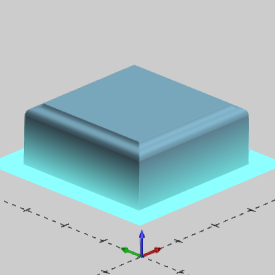
IMPORTANT: When using the X-Y Scale and Z Scale parameters, only the cross section is scaled. The scaling does not affect the Base Height or the feature geometry.
In addition to using the standard cross-section types that are available in the Emboss dialog box, you can also define a custom cross section using geometry that you create in the graphics area.
To learn more, view How to Use a Custom Cross Section.
This concludes the tutorial.
BobART Tutorials
BobART Overview